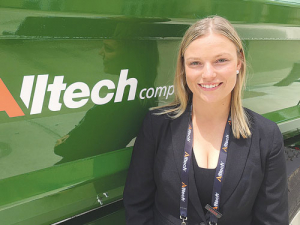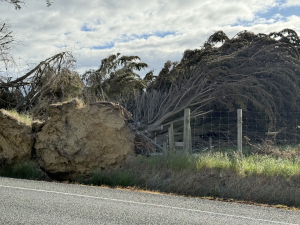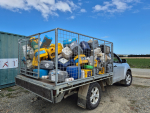Flannagan presented her research findings at One, the Alltech Ideas Conference, and her win has earned her a fully-funded PhD position at the university of her choice and US$5000 in cash.
She said her win would lead to further opportunities.
“Without the scholarship and funding I probably wouldn’t have had a chance to do my PhD,” she said. “It has definitely opened a lot of doors.”
Flannagan’s study has been well received by farmers and experienced scientists and she said she would like to pursue the research opportunities that have come from it.
“What’s next is the exciting part.”
Flannagan conducted a lamb feedlot trial in 2017, looking at the effect of UDPs and RDPs on lamb production parameters.
Feed makes up about 70% of the total input costs associated with lamb production and protein contributes the most to this cost.
“Sheep have unique dietary requirements to satisfy the rumen microbes and the needs of the animal itself,” Flannagan said.
“Well formulated diets will contain both rumen degradable protein (RDP) to satisfy the need of the microbes and undegradable dietary protein for the direct benefit of the animal.
“RDP is relatively cheap compared to UDP.”
The study was designed to discover two things: how important is the ratio of RDP: UDP and what is the economic impact of the dietary protein source in feedlot diets
“From our understanding of protein digestion we wanted to look at different sources of UDPs and whether one is better than another based on their amino acid composition,” Flannagan said.
Over 27 days, 120 lambs were fed three diets, each with different sources of protein.
Diet A contained barley and oats, 1kg of urea and 1.3kg of biuret; diet B contained of 29.8kg of lupins and diet C contained 43.7kg of peas.
“By keeping the crude protein consistent between the treatment groups we could see the effect of each protein source,” she said. “We could also compare the economic effect of each protein source.”
Flannagan concluded that it doesn’t matter what source is used, just the ration, and that producers can use whatever UDP source is available to them.
“We determined the source of UDP to be not significant in lamb production
“It would be worth looking at specific amino acid metabolism and the absorption of each and their effects on lamb production and developing rumen metabolisable resistant amino acids as a mix.
“Common plant proteins used for stock feed are relatively low in amino acids.
“If we could develop amino acids to be able to include in pellets or trace element mixes we would be better able to provide sheep with the necessary building blocks for growth and save money on unnecessary feed.”
• Alltech funded Stephen Cooke’s attendance at the Alltech ONE Conference.

















